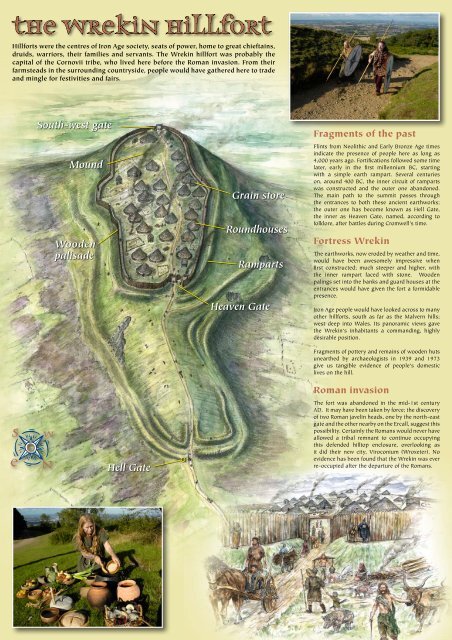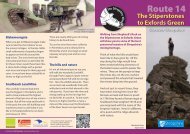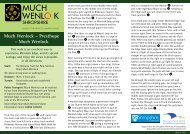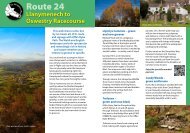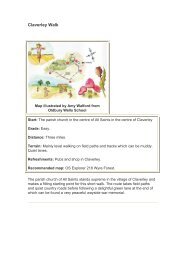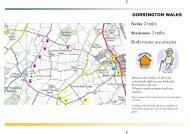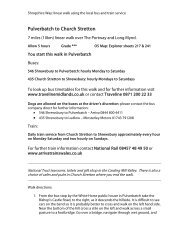discoveringbritain/more info documents/Wrekin Hillfort leaflet.pdf
discoveringbritain/more info documents/Wrekin Hillfort leaflet.pdf
discoveringbritain/more info documents/Wrekin Hillfort leaflet.pdf
You also want an ePaper? Increase the reach of your titles
YUMPU automatically turns print PDFs into web optimized ePapers that Google loves.
THE WREKIN HILLFORT<strong>Hillfort</strong>s were the centres of Iron Age society, seats of power, home to great chieftains,druids, warriors, their families and servants. The <strong>Wrekin</strong> hillfort was probably thecapital of the Cornovii tribe, who lived here before the Roman invasion. From theirfarmsteads in the surrounding countryside, people would have gathered here to tradeand mingle for festivities and fairs.South-west gateMoundWoodenpalisadeHell GateGrain storeRoundhousesRampartsHeaven GateFragments of the pastFlints from Neolithic and Early Bronze Age timesindicate the presence of people here as long as4,000 years ago. Fortifications followed some timelater, early in the first millennium BC, startingwith a simple earth rampart. Several centurieson, around 400 BC, the inner circuit of rampartswas constructed and the outer one abandoned.The main path to the summit passes throughthe entrances to both these ancient earthworks;the outer one has become known as Hell Gate,the inner as Heaven Gate, named, according tofolklore, after battles during Cromwell’s time.Fortress <strong>Wrekin</strong>The earthworks, now eroded by weather and time,would have been awesomely impressive whenfirst constructed; much steeper and higher, withthe inner rampart faced with stone. Woodenpalings set into the banks and guard houses at theentrances would have given the fort a formidablepresence.Iron Age people would have looked across to manyother hillforts, south as far as the Malvern hills;west deep into Wales. Its panoramic views gavethe <strong>Wrekin</strong>’s inhabitants a commanding, highlydesirable position.Fragments of pottery and remains of wooden hutsunearthed by archaeologists in 1939 and 1973give us tangible evidence of people’s domesticlives on the hill.Roman invasionThe fort was abandoned in the mid-1st centuryAD. It may have been taken by force; the discoveryof two Roman javelin heads, one by the north-eastgate and the other nearby on the Ercall, suggest thispossibility. Certainly the Romans would never haveallowed a tribal remnant to continue occupyingthis defended hilltop enclosure, overlooking asit did their new city, Viroconium (Wroxeter). Noevidence has been found that the <strong>Wrekin</strong> was everre-occupied after the departure of the Romans.


